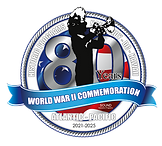NATIONAL PEARL HARBOR MEMORIAL PARADE AND PUBLIC CEREMONY

PRESENTING SPONSOR HISTORY® / A+E NETWORKS
Follow us for updates on official parade events and activities
USS Arizona (BB-39)
USS Indianapolis: 1932 - 1945
The USS Indianapolis was a 9,800 ton Portland class cruiser. She was built at Camden, New Jersey and commissioned in November of 1932. Before the War, she hosted President Franklin D. Roosevelt on a voyage to South America at the end of 1936. After the United States entered the war, she joined carrier task forces in the southwestern Pacific until 1942 when she moved to the Alaska area. In 1944, as Fifth Fleet Flagship, she took part in operations to capture the Gilbert, Marshall and Mariana Islands as well as attacks on Japanese positions in the Central Pacific.


The End of WWII
With only a few weeks remaining before Japan would surrender on board the USS Missouri, the Indianapolis was commissioned to deliver components for an Atomic bomb that would be dropped on Japan. After delivering the components to Tinian, she departed for the Philipines. Shortly after midnight on July 30, 1945, she was hit by a torpedo launched from a Japanese submarine. She quickly capsized and sank within 12 minutes. Of the approximately 1,200 men on board, 300 were lost and sank with the Indianapolis. For the next five days, the remaining 900 men were left floating with very few life rafts and with no food or water. Most of the men had to use life preservers to stay afloat, which became waterlogged after 2 or 3 days forcing the men to constantly try to keep their heads above water. When the Indianapolis sank, no one from the Navy knew that she was missing, so there were no rescue missions until the survivors were spotted by accident by an American patrol aircraft. Only 316 men survived those days in shark infested water.
After the tragedy
After the survivors were rescued in early August, Captain Charles B McVay III was court-martialed and convicted of "failing to zigzag" on route to the Philipines. This zigzag motion was designed to make it more difficult for enemies to hit the Indianapolis with a torpedo, although the captain of the Japanese sub testified that this would not have made a difference. In October of 2000, after years of great effort by the survivors of the Indianapolis, legislation was passed and signed by President Clinton that Captain McVay be exonerated of the loss of the Indianapolis and her crew.

